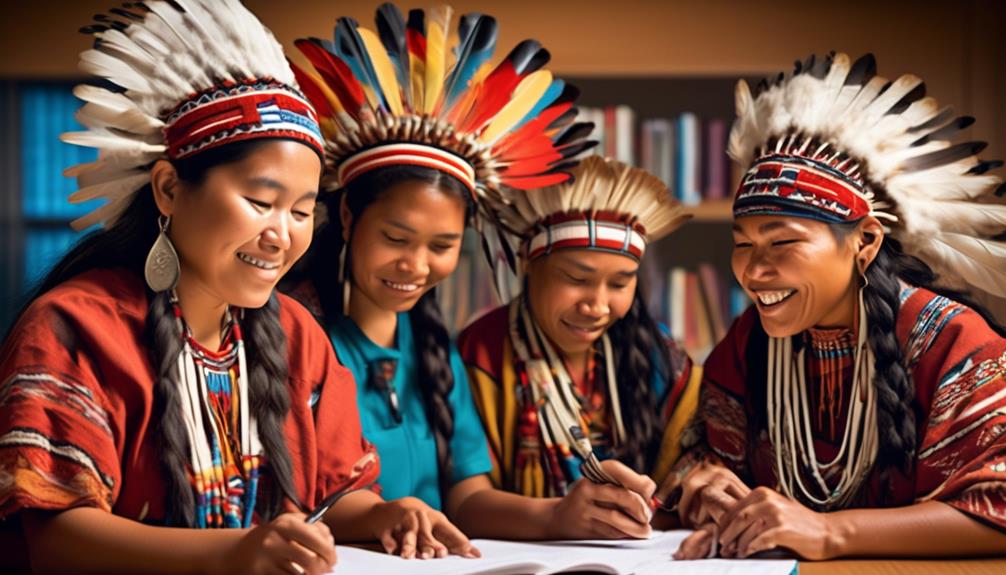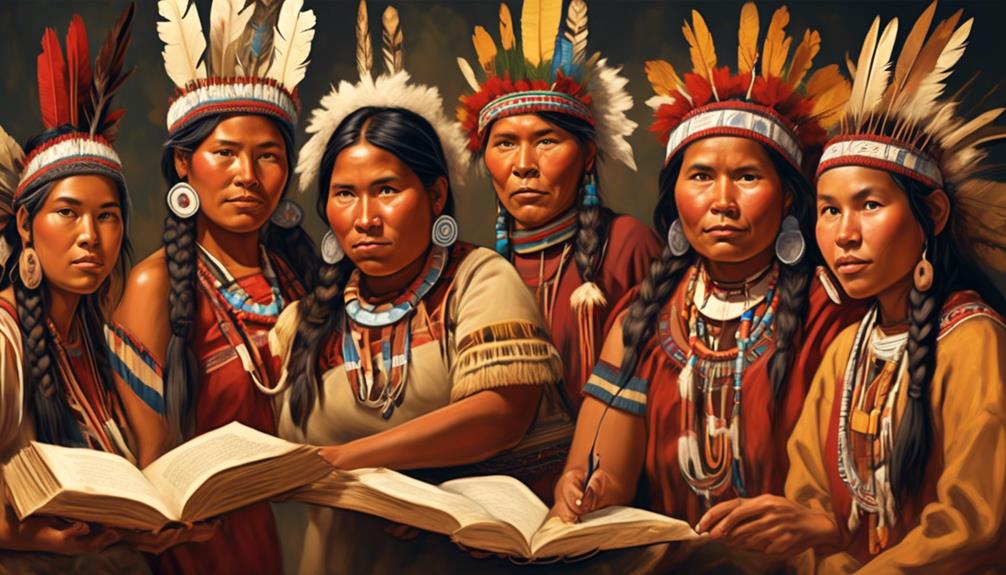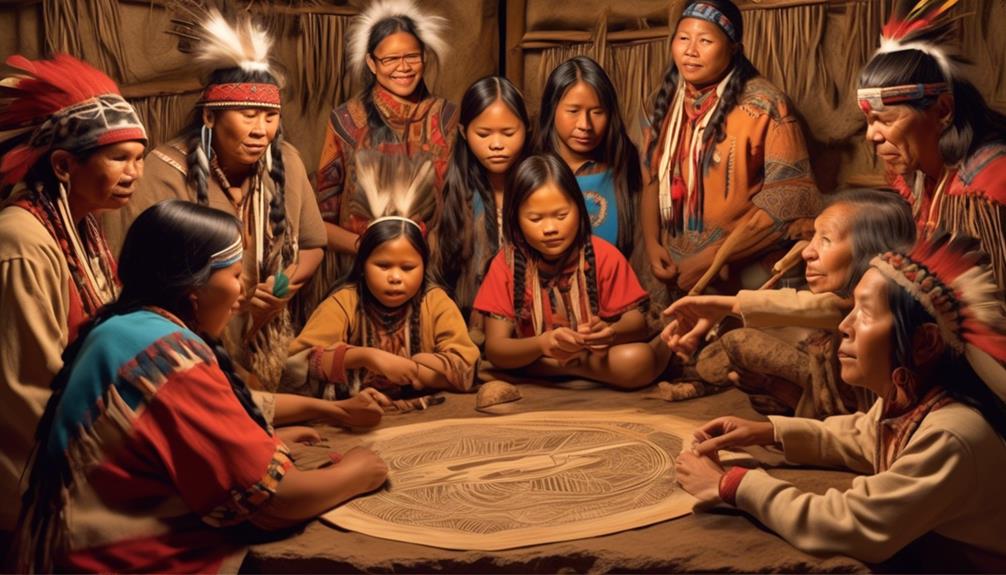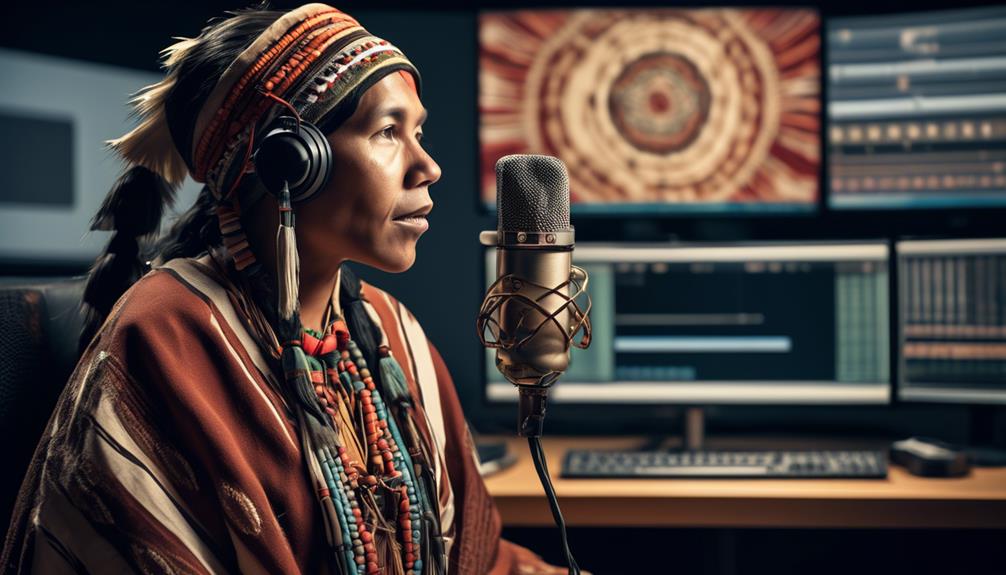Many times, we overlook the important work done by workers who speak Indigenous languages in preserving and revitalizing endangered languages. Fortunately, there is a program dedicated to providing support, training, and development opportunities to these skilled language speakers.
The impact of this program reaches far beyond just language preservation, and it has the potential to transform the future of Indigenous communities. The strategies and approaches employed are not only innovative but also deeply rooted in the cultural significance of language.
The implications of this work are profound, and understanding the intricacies of empowering Indigenous language workers is essential for anyone invested in the sustainability and resilience of these communities.
Key Takeaways
- Empowering Indigenous language workers is crucial for preserving endangered languages.
- Training and developing specialist language speakers helps to safeguard cultural identity and well-being.
- Investing in language preservation supports community resilience and a sustainable future.
- Recognizing the expertise and contributions of language workers empowers them as custodians and advocates for their language.
Importance of Indigenous Language Preservation
Preserving endangered languages is crucial for maintaining the cultural identity and well-being of indigenous communities. Language isn't just a means of communication; it's deeply intertwined with the history, traditions, and values of a community. When a language is lost, a whole way of life, a unique worldview, and a sense of belonging are at risk of disappearing.
This is a matter of human rights, as language is an essential part of a person's identity and cultural heritage. By preserving indigenous languages, we're safeguarding the fundamental human right to maintain and celebrate one's own culture.
Furthermore, language preservation is directly linked to the overall well-being of communities. Studies have shown that language revival leads to happier, healthier children and stronger, more resilient communities. When people can communicate in their native language, they feel empowered and connected to their roots, which contributes to a sense of belonging and mental well-being.
In essence, supporting language protection means supporting the human rights and holistic well-being of real people. Therefore, investing in language preservation isn't just about preserving words; it's about upholding the rights and dignity of indigenous communities.
Training Specialist Language Speakers

Empowering Indigenous communities through specialist language speaker training is a crucial step in reclaiming, strengthening, and revitalizing endangered languages. This training is vital for preserving and revitalizing endangered languages, and it plays a significant role in the overall well-being of Indigenous communities.
By training specialist language speakers, we can achieve the following:
- Preservation and Revitalization: Specialist language speaker training focuses on preserving and revitalizing endangered languages, ensuring that these languages continue to thrive for future generations.
- Cultural Identity: Supporting language protection means safeguarding cultural identity, which is essential for the well-being of Indigenous communities and individuals.
- Community Resilience: Language protection and preservation are vital for the sustainability and resilience of communities. Training specialist language speakers is a fundamental endeavor in promoting the overall well-being of Indigenous communities.
Training specialist language speakers isn't only about language; it's about empowering communities and individuals to preserve their cultural heritage and ensure a sustainable future. This training is an investment in the well-being of real people and contributes to the resilience and strength of Indigenous communities.
Developing Skills for Language Preservation
Developing skills for language preservation involves actively engaging indigenous communities in the revitalization and protection of endangered languages. By equipping community members with the necessary tools and knowledge, we empower them to take the lead in preserving their language for future generations. This not only supports safeguarding cultural identity but also contributes to the well-being of real people.
Language preservation isn't just about words; it's about supporting the entire community. It's linked to happier, healthier kids, advances in science, and more resilient communities. Empowering Indigenous communities to preserve their languages is a key goal of language preservation efforts. When we invest in language preservation, we're investing in the strength and resilience of these communities. It leads to stronger and more resilient communities.
Empowering Indigenous Language Workers

Our efforts to support and uplift indigenous language workers are vital in the preservation and revitalization of endangered languages. By empowering indigenous language workers, we can make a significant impact on the preservation of cultural heritage and the well-being of these communities.
Here's how we're approaching this task:
- Providing Training Opportunities:
- Offering specialized training programs to develop language preservation skills.
- Empowering indigenous language workers with the necessary tools and resources for effective language documentation and revitalization.
- Fostering Community Engagement:
- Creating platforms for indigenous language workers to connect, share knowledge, and collaborate on language preservation initiatives.
- Empowering these workers to take leadership roles within their communities and advocate for the importance of language preservation.
- Recognizing Specialist Contributions:
- Acknowledging the expertise of indigenous language workers as specialists in their languages and cultures.
- Empowering them to take pride in their roles as language custodians and providing recognition for their valuable contributions to language preservation efforts.
Through these initiatives, we aim to empower indigenous language workers to become champions for the preservation and revitalization of their languages, fostering sustainable and impactful change within their communities.
Sustainable Future Through Language Revitalization
As we consider the sustainable future through language revitalization, it becomes clear that our efforts to empower indigenous language workers play a crucial role in preserving and revitalizing endangered languages.
Language revival isn't just about words; it's about creating a sustainable future for communities. By supporting language protection, we safeguard cultural identity and the well-being of real people. Our work is rooted in the belief that every community deserves the opportunity to teach, learn, and sustain their language.
At 7000 Languages, we envision a world where all communities have the resources to reclaim, strengthen, and revitalize their endangered languages. This vision isn't only about preserving linguistic diversity but also about creating a better future for all. Research shows that language revival is linked to happier, healthier kids, advances in science, and more resilient communities.
Through early childhood immersion programs, families and communities can learn Native languages and cultures, contributing to linguistic and cultural competence. By empowering indigenous language workers, we're paving the way for a sustainable future where better user and preservation of endangered languages are at the forefront of community development.
Frequently Asked Questions
How Can We Promote Indigenous Language?
We can promote indigenous language through community engagement.
By actively involving local communities, we can raise awareness, provide resources, and support language revitalization efforts.
Engaging with the community allows us to understand their specific needs and tailor our approach to best serve them.
Together, we can empower indigenous language speakers and create a sustainable future for these precious languages.
What Are the Benefits of Teaching Indigenous Languages?
Teaching indigenous languages is crucial for cultural preservation. It fosters a deep sense of identity and community pride, preserving unique traditions and knowledge.
By preserving these languages, we empower communities to thrive and maintain their heritage. Additionally, it contributes to the well-being of individuals and the overall resilience of societies.
Cultural preservation through language teaching is essential for creating happier, healthier, and more resilient communities.
Why Is It Important to Revitalize Indigenous Languages?
Revitalizing Indigenous languages through language preservation is crucial for preserving cultural heritage and identity. It strengthens communities and safeguards the well-being of Indigenous groups.
Reviving endangered languages is essential for advancing scientific knowledge. By empowering Indigenous language workers, sustainable language revitalization efforts can be achieved.
Language preservation not only serves as a symbol of cultural pride but also fosters resilience and happiness within Indigenous communities.
What Is the Power of Indigenous Language Learning?
Learning indigenous languages holds the power of language revival. It fosters cultural pride, strengthens community bonds, and contributes to the well-being of future generations.
When we engage in indigenous language learning, we honor and preserve the rich heritage and traditions of diverse communities. This revitalization brings joy, resilience, and a deeper understanding of our interconnectedness, ultimately fostering a more inclusive and empathetic society.
Conclusion
As we continue to train and develop specialist language speakers, we're paving the way for a sustainable future where Indigenous communities can reclaim, strengthen, and revitalize their languages.
With the empowerment of Indigenous language workers, we're creating a ripple effect that will lead to stronger and more resilient communities.
The journey towards language preservation and revitalization is just beginning, and the possibilities for the future are endless.
Stay tuned for the incredible impact that's yet to come.









